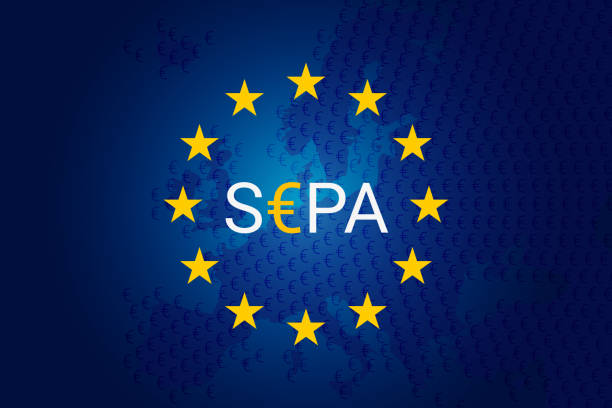Last week, the European Payments Council (EPC) has stepped up efforts to illustrate the differences regarding the use of the SEPA Instant Credit Transfer (SCT Inst) and One-Leg-Out Instant Credit Transfer (OCT Inst) Schemes.
The OCT Inst scheme, one of the latest EPC initiatives, allows for the use of instant payment rails, which operate 24/7 and in real time, to settle the Euro leg of a cross-border payment.
It is intended to be a significant step towards seamless, real-time cross-border payments, ensuring that there is interoperability in transactions between the 36 SEPA countries in Europe and non-SEPA jurisdictions.
Like other EPC schemes, OCT Inst defines a comprehensive set of rules, practices, and standards for the euro-denominated leg of an international instant credit transfer.
It leverages existing SEPA payment rails and infrastructures familiar to payment service providers (PSPs), such as those underpinning the SEPA Instant Credit Transfer (SCT Inst) scheme.
Through greater speed, cost transparency, and improved payment traceability, OCT Inst was drawn up with the intention of empowering banks and payment services to make global instant payments faster and more seamless for European consumers, whilst ensuring that participants are capable of identifying payments that originate from or are destined to non-SEPA countries (leg-out payments), and screening them accordingly.
For years, the SEPA instant scheme has been used by participants for the settlement of leg-out payments by both financial institutions and money movement businesses, that split cross-border payments up into a domestic “collection on behalf of” in the payer’s country, and a domestic “payment on behalf of in the payee’s” country.
The use of these instant domestic payment rails in a cross-border payment context is a strong enabler of the G20 objectives regarding payment speed and cost, but has raised questions about the legality of the practice in various markets, as well as how to address concerns regarding the ability for all PSPs in the chain to screen the payment for sanctions, CFT, and AML compliance.
In this blog, Paylume is diving into what is at stake, and the importance of OCT Inst for PSPs across the EU.
What are the main differences between OCT Inst and SCT Inst?
The main difference between the OCT Inst and SCT Inst is within their scope and geographical reach.
The SCT Inst scheme enables pan-European euro-denominated instant credit transfers, using IBANs and participating PSPs in the SEPA zone, with availability 24/7/365 and a target processing time of 10 seconds.
By contrast, OCT Inst covers the euro leg of international instant credit transfers, connecting SEPA with non-SEPA countries or currencies. To account for this, it allows more flexible identifiers and financial institution codes on the non-euro leg of the transaction, supporting all charging options, and incorporates dedicated ISO 20022 message elements to ensure that there is transparency on currency conversion and original transaction details.
OCT Inst also aligns with CBPR+ messaging standards and defines clear roles for euro leg participants on entry and exit, while recognising that processing on the non-euro leg may not always be instant or fall under EPC governance.
Why is misuse being called out?
It has recently been rumoured that some PSPs in SEPA are misapplying the respective SEPA schemes to process international one-leg-out payments, something which is not permitted.
In these instances, a PSP within SEPA receives funds from outside the SEPA area, for example the US or China, and then sends them domestically via SCT or SCT Inst. In doing so, this disguises an international transaction as a SEPA payment.
This practice is claimed to be in breach of the 2012 SEPA regulation, which limits SCT and SCT Inst to end-to-end euro transfers within SEPA. Key information about the true payer, funding source, and intermediary institutions is often missing, preventing proper due diligence by receiving PSPs.
In recent call outs to the market, the EPC has urged participants to stop using SCT or SCT Inst for such transactions and to adopt the OCT Inst scheme, designed for compliant international payments.
What are the consequences of increased scrutiny?
Increased scrutiny from the EPC poses a significant set of compliance and reputational risks for banks, payment, and e-money institutions that are signed up to the SEPA schemes.
Under sections 5.7 and 5.8 of the 2025 SCT and SCT Inst rulebooks, participants must comply with EU laws such as the Funds Transfer Regulation (EU 2023/1113), which implements FATF Recommendation 16 on payment transparency.
Those that are found to be in breach, and processing international payments disguised as SEPA transactions are at risk of breaching not only EPC rules but money laundering and sanctions rules, as well as know-your-customer (KYC) obligations.
Penalties for this type of action may include EPC disciplinary actions, reporting to regulators, or even exclusion from SEPA schemes, all of which would have negative commercial and reputational consequences for firms.
So what happens next?
Whereas the OCT scheme is clearly the best practice solution for such leg out transactions, the challenge faced by providers wishing to leverage the scheme is the lack of participants.
Indeed, today, Iberpay is the only market infrastructure supporting the scheme, and in that, only a handful of Spanish banks are registered as scheme participants.
In September, EBA Clearing announced that with 10 major European transaction banks, RT1 will be enabling OCT-Inst, which is set to improve coverage by 2027.
Meanwhile, Euro Banking Association also urged banks to adopt the scheme swiftly during their general assembly of 2025.
However, until the more widespread adoption of the OCT Inst scheme becomes available, PSPs will be challenged to find solutions to support their business models while remaining compliant with the EPC schemes.
Moreover, the practice of using domestic market infrastructures for cross-border payments resides in a grey zone in many market infrastructures.
The question that will keep leaders of many money movement businesses awake at night is whether other jurisdictions and payment schemes will follow the EPC’s suit of explicitly prohibiting leg-out transactions or will continue the laissez-faire approach that has supported faster and cheaper payments in their respective jurisdictions at the cost of end-to-end party transparency.


